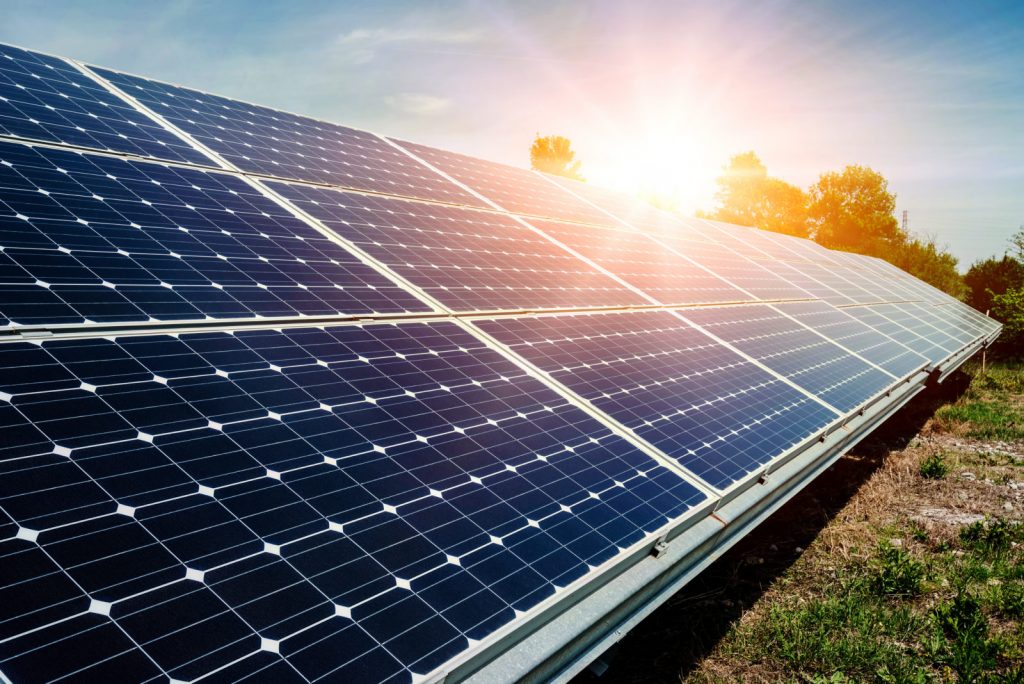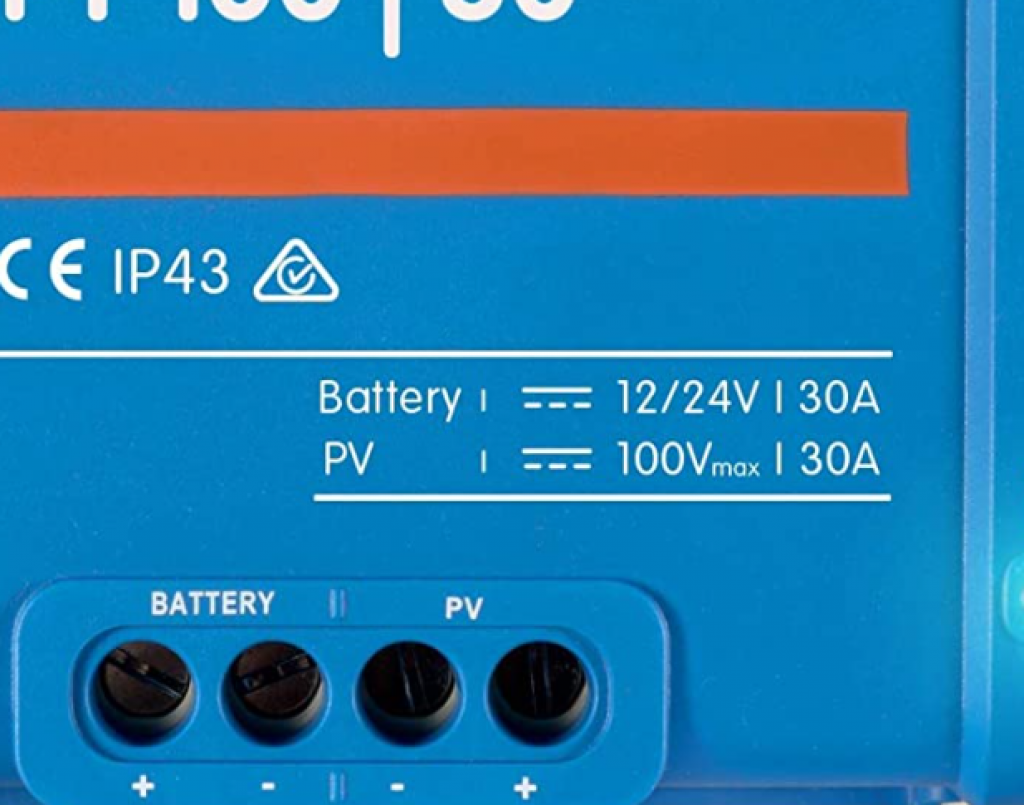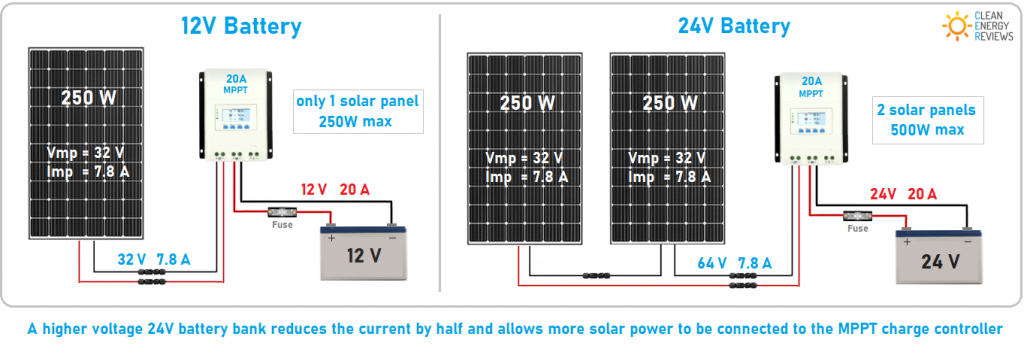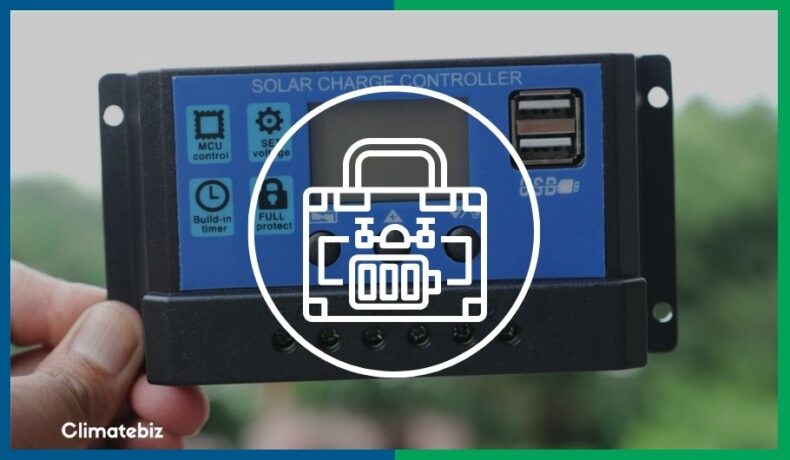Charge controllers are essential to prolonging your PV system; they act as a protection device for your solar panels and battery packs, preventing overcharging and over-discharging while maximizing the solar charging process at the same time.
That being said, we can all agree that this feature in PV systems is a must-have and will give you peace of mind in the long run. However, not knowing how many charge controllers you need may hurt the ROI of your solar panel investment.
So, exactly how many charge controllers do you need?
In general, you will need one charge controller per solar system. You can have more than one but they should all be identical with the same voltage settings. As long as you size your solar charge controller properly (especially in terms of current), you are sure to maximize your solar energy harvest.
Now, if you want the nitty-gritty, read on.
In terms of electrical engineering fundamentals, solar charge controllers are rated two ways: by current and system voltage. These two variables are the bases for sizing your charge controller to handle the incoming solar panel power.
Typically, voltage ratings are 12V, 24V, or 48V. On the other hand, amperage ranges from 1 to 60 amperes.
If you recall that the power formula is expressed as the product of current and voltage, you can imagine a charge controller sensing and manipulating these variables continuously (current and voltage) to maximize the solar energy going into your battery while protecting it at the same time.
This is true specifically to MPPT-type solar charge controllers that use a charging algorithm to match the voltage of the solar panels, the charge controller itself, and the batteries while not wasting any harvested solar energy.
We can geek out on that mind-blowing algorithm but that would just be showing off, wouldn’t it?
Well, we could be wrong though so let us know in the comment sections if you are interested in how MPPT solar chargers can pull off accelerated solar charging.
Table of Contents
How Many Charge Controllers Do I Need?
Hopefully, just one to avoid overcomplicating your PV set up. However, this isn’t always the case.
Charge controllers regulate the power output of your solar panel and charge your battery appropriately. To choose the one most suited to your needs, we need to go through the following factors:
- Expected solar panel output (Volts and Current)
- Power bank storage
- Charge controller type
Expected Solar Panel Output
The expected voltage output of a solar panel depends on its number of cells. Each solar cell has an output voltage of 0.5-0.6V. The following are examples of solar cell amounts with their relative output.
- 36 cells would output 18V
- 72 cells would output 36V
- 96 cells would output 48V
Additionally, you’ll have to consider the number of solar panels you have/ will need. This number will depend on your needs, but you’ll generally have more than one.

Power Bank Storage
You’ll probably be using a battery for your solar setup, given you will need somewhere to store the solar energy. Currently, two types of batteries are used for solar power systems: deep-cycle lead-acid and LifePO4. Deep-cycle lead-acid are generally available in 12V, while LifePO4 can come in 12V, 24V, and 48V.
We recommend that you go with lithium-ion batteries. When comparing them to lead-acid batteries, you’ll find that they’re lighter, more durable, and more efficient.
They’re also modular. Therefore, you can scale your energy storage system size specific to your needs.
And thanks to the rapid development of electric vehicles, the price of lithium-ion batteries is projected to drop more over time. There may be some battery chemistry alternatives that can challenge lithium-ion in the future, but right now it is the most commercially viable energy storage solution in the market.
However, a challenge when dealing with solar systems is that you have to match the voltage levels of ALL components. For example, you cannot charge a 24V battery with a 48V solar panel system for the same reason you can’t plug 120V devices in a 220V system.
Now, this is where the benefit of having a charge controller comes in.
Charge Controller Types
There are plenty of charge controller types being developed by the academe as we speak. However, only two types of charge controllers are common in the marketplace: PWM and MPPT.
Both systems use a transistor to stop your battery from charging once it’s full or reaches an unhealthy discharge point. These devices have two essential functions:
- Regulate the flow of power from the solar panels and the battery; and
- Charge the battery as quick as possible.
We recommend you avoid PWM solar charge controllers for large systems (say 1kW or more); they’re highly likely to incur damages given their limited capabilities. However, they should be a viable choice if you’re looking at running smaller setups on a budget such as a van, solar panels on a boat, RV Solar Panels, or Solar Trailers.

Source: Victron, Amazon.
How Big Should My Charge Controller Be?
As previously mentioned; you have to know your expected solar power output before you can size your charge controller.
Charge controllers work by regulating the voltage and/or current to and from your batteries. Typical charge controller ratings are 12V, 24V, and 48 V and an amperage falling between 1-60 amps.
To size them, you need to:
- Determine your solar arrays voltage (volts) and current (amps).
- Add a factor of 25% to your expected amps (times by 1.25). In a nutshell, this is a safety factor to account for excessive ampere production.
So, for example, if you have a 400-watt solar panel rated at 40V and 10A (see first image below), you’d need either a PWM or MPPT charge controller that can handle at least 40V and 12.5A.
In this case, a Victron 100V/30A MPPT controller can handle this solar panel input. You can even go for two solar panels in series (amounting to 80V) since this particular product can tolerate up to 100V (see second and third image below)!



ClimateBiz Insight: Exceeding Charge Controller Amp Rating
Having a charge controller amp rating higher than what is required shouldn’t be an issue except for spending more money. However, the same thing could not be said if the charge controller has less ampere capacity than what is needed.
Let’s elaborate.
For example, if you have a 30A PWM solar charge controller, exceeding this value (say 40A) will definitely ruin this component.
Alternatively, If it is a 30A MPPT controller, the 40A will be reduced to 30A, making the entire solar system inefficient (less power).
Bottom-line
In conclusion, deciding the size of your solar charge controller depends on voltage and amperage rating, but more on the latter. We saw that a properly sized PWM or MPPT charge controller can link a 400W solar panel to a 12V/24V battery. A PV current exceeding the rating of a PWM controller is a big “no-no” while an MPPT controller can reduce it within acceptable limits.
How Many Charge Controllers Do I Need?
So how many charge controllers do you need?
One per handful of panels (a.k.a solar panels wired together in parallel or in series) is the best scenario in our opinion as long as you get the sizing right. Consider multiple charge controllers only when one charger is not enough to handle solar panel inputs.
Now that you’ve determined how big your charge controller needs to be, you may be thinking, “my home EV charging system has eleven 400W solar panels! Now what?”
Remember, charge controllers depend on the rated voltage and maximum current delivered from the solar panel array. These two variables determine the number of solar panels you can connect to a charge controller.
So if we take a typical 12V system as an example, you’d need one charge controller per solar panel. If you have a 24V system, you may be able to connect more solar panels in series to one charge controller.
We can use Ohm’s law and the Power Equation (P = V * I) to explain this.
For example, if we have a 40A MPPT charge controller and a 12V battery, we can accommodate 480W. If the battery were 24V (twice the size), we can accommodate 960W.

Source: Clean Energy Reviews.
In doing this, we can connect more solar panels in series with larger battery sizes and therefore connect more solar panels to one charge controller.
While this sounds great, you need to check total costs beforehand to see which option is more viable. You’d need to check the prices for the charge controllers, batteries, and DC-to-AC inverters.
Can I Use Multiple Charge Controllers At Once?
It’s perfectly fine to use more than one charge controller at the same time. However, we recommend that you get similar controller types to avoid complications. Also, know that having more charge controllers might be troublesome since you will manage more components in your system. Lastly, make sure all your controllers have the same battery setting input.
There are however reasons to add more charge controllers. These are:
- You require more solar panels
- You’re wanting to upgrade some of your solar panels
- You want to separate some of your solar panels to increase sunlight irradiance
So, don’t worry about wanting/needing to add another charge controller to your system. Just remember — each charge controller should have its own array of solar panels.
Do I Need A Charge Controller For Each Battery?
No, you can connect multiple charge controllers to the same battery bank. In fact, charge controllers work together to fill a battery, reducing battery charging time.
Charge controllers work by “sensing” the internal resistance of the battery bank. If the batteries are low on charge, they will have lower resistance.
In turn, the controller will send current to the batteries. Conversely, if the battery is almost full, the resistance will increase, and the charging current will decrease.
If you’re using lead-acid batteries for your battery bank, be sure to inspect the connection between the charge controllers.
In short, multiple charge controllers with these batteries will “equalize” more frequently. This situation isn’t ideal for lead-acid batteries, so you need to ensure that your charge controllers communicate so that only one charge controller will balance the cells.
Final Thoughts
The number of charge controllers you’ll need depends on your system’s current and voltage. As a general rule of thumb, if you have a 12V system, you’ll need one charge controller per solar panel. This can change if you use 24V batteries, as you may connect multiple solar panels to one controller.
Additionally, you can use multiple charge controllers for the same battery bank. They work together to “fill the bucket,” so to say. Just make sure that each one has its own solar panel array.
If you’re unsure about the type of charge controller most suitable for your project, read our article — How To Build A DIY Solar EV Charging Station.

